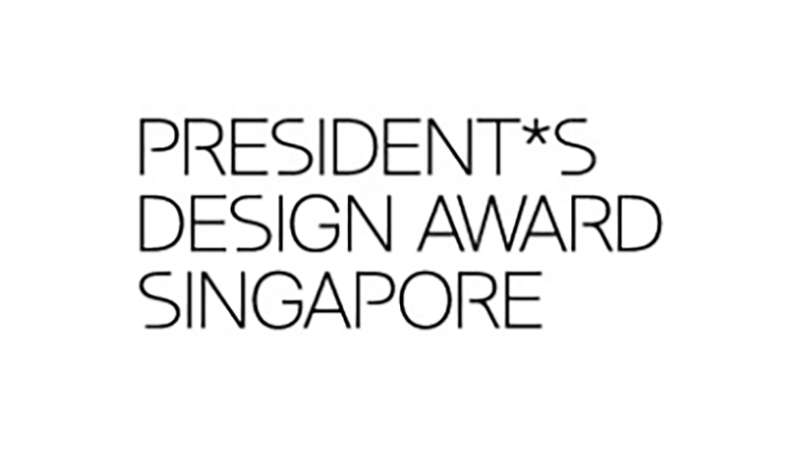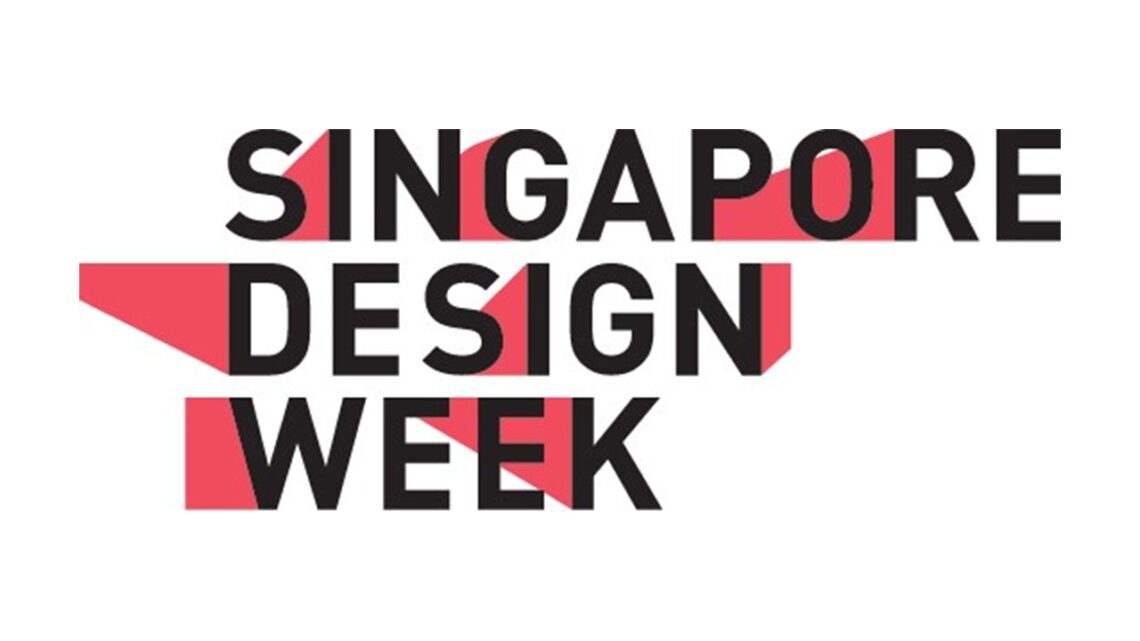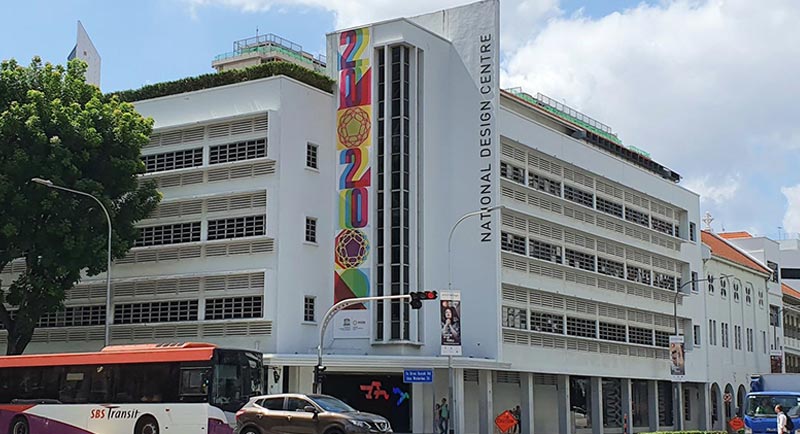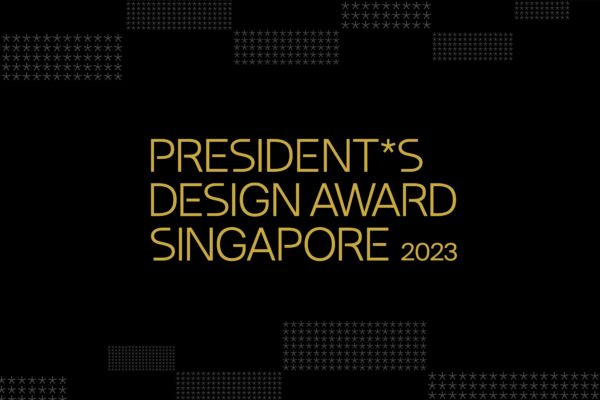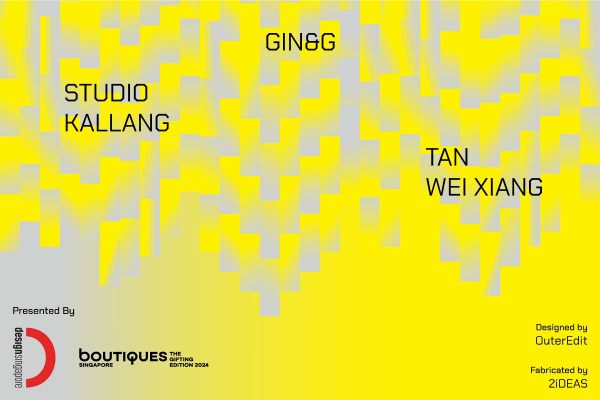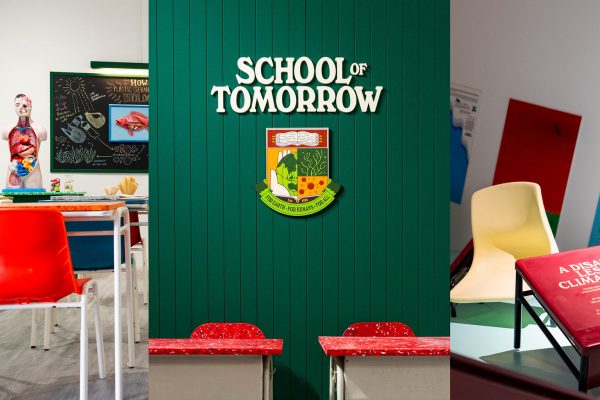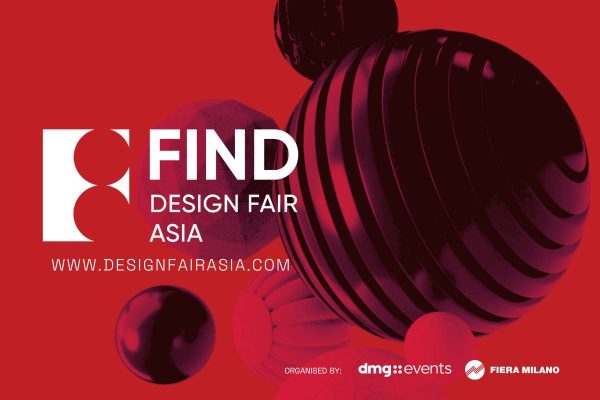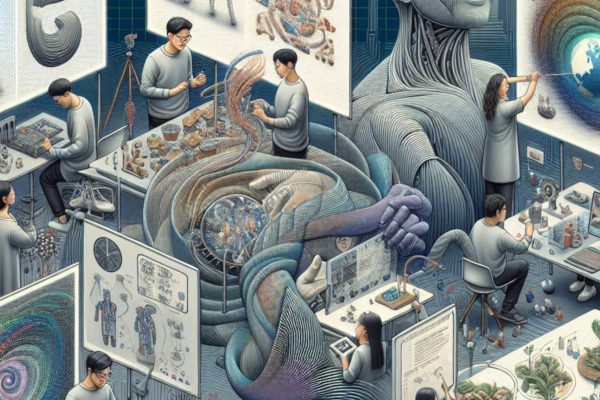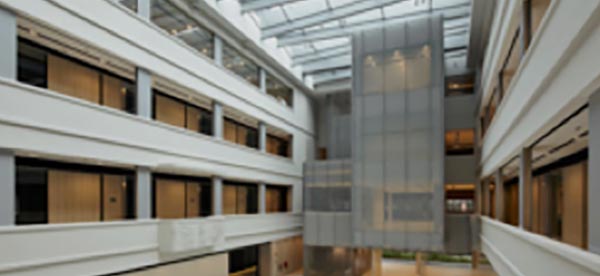The emotional resonance of design has always guided Studio Juju. Since 2009, Co-founders Priscilla Lui and Timo Wong have created furniture, lighting, objects, installations, and spaces that have a way of making you pause and contemplate – often with an accompanying feeling of joy or wonder. Having established their name internationally, they are currently exploring opportunities to develop cultural resonance with design on home soil.
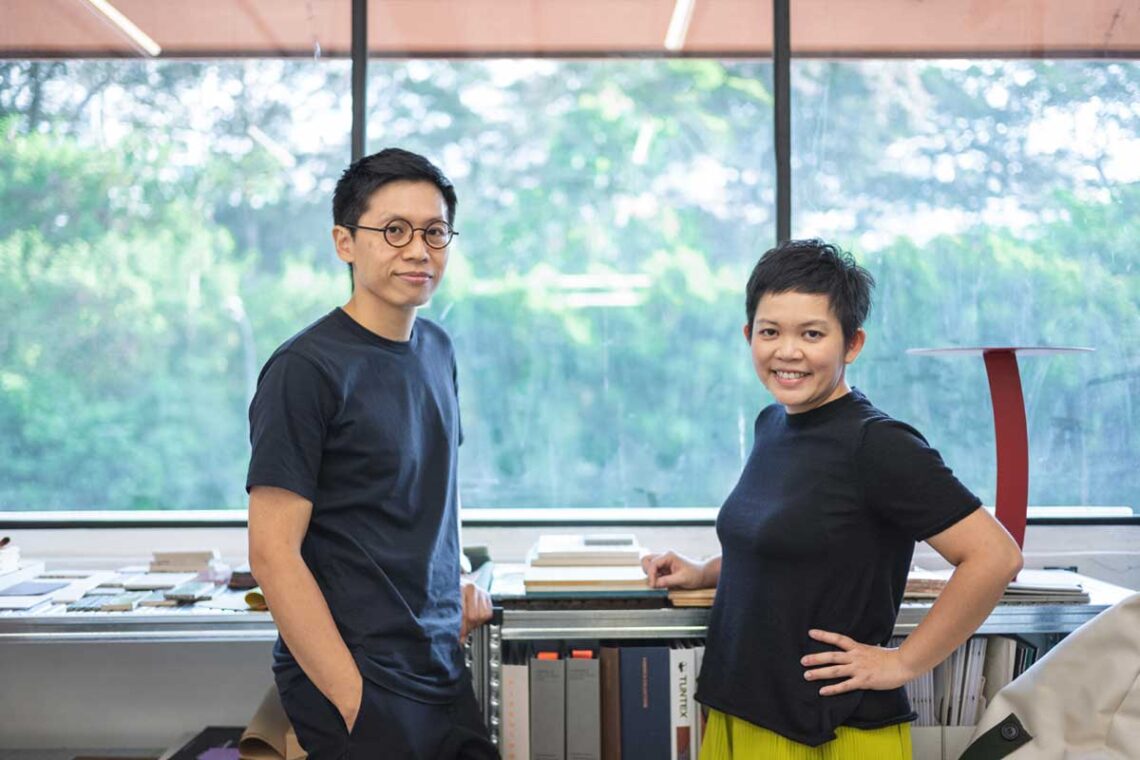
Article by Narelle Yabuka.
Have you ever passed through the Tampines MRT station on Singapore’s Downtown Line? If you have, you most likely orientated yourself within the vast underground space of the station in response to two large wall-mounted installations created by Studio Juju.
One of them, a seven-metre-diameter white disc, hangs brilliantly on a dark wall at one end of the station, revealing itself in full as you make your way up or down an adjacent staircase between the ticketing concourse and the train platform. The other, an enormous nine-metre-long rounded orange stroke, makes its mark on the opposite wall, revealing its full length as you ascend or descend in the lift.
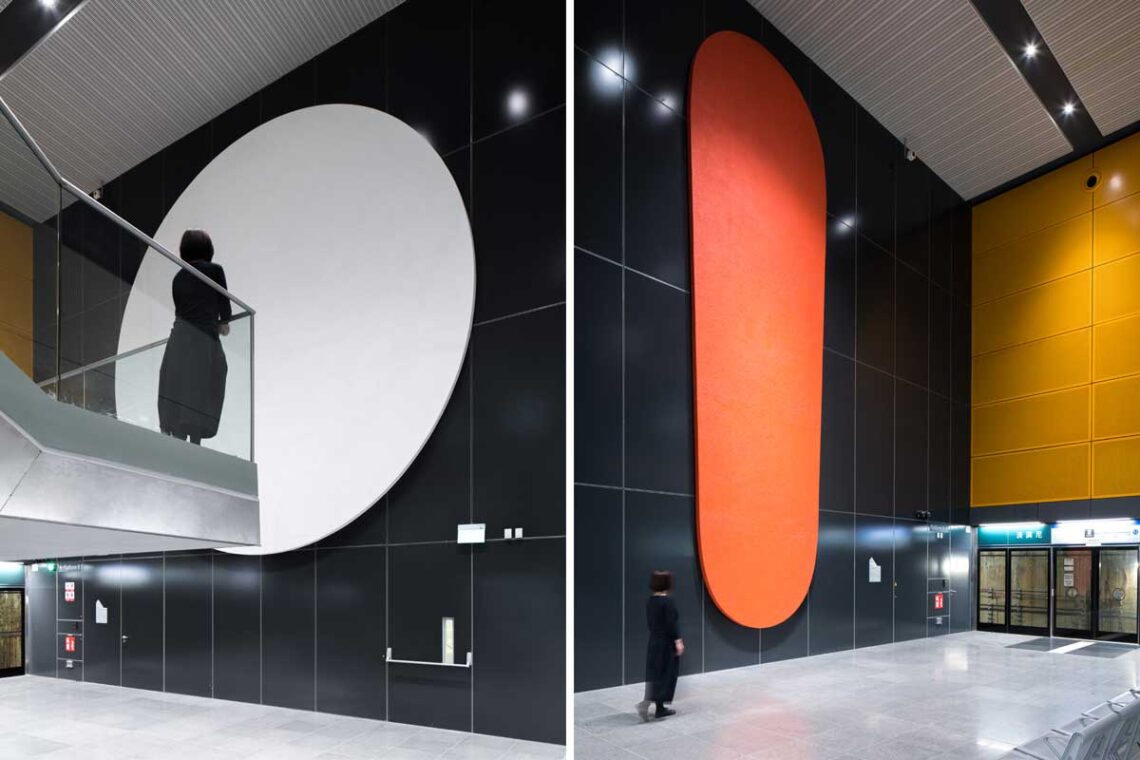
Created for the Land Transport Authority of Singapore’s Art in Transit programme, these works – titled The Big Round and The Tall Long – were named with a functional tone that belies the atmosphere they create in the space. Although presented as flat shapes on walls, both works are highly resonant spatial interventions. They mediate between commuters and the deep, cavernous volume of the station by drawing attention to the scale of the space as well as the movement of human bodies within it. The result is a heightened awareness of the vastness of the space.
The Big Round and The Tall Long are simple, monochromatic forms, quietly demanding attention and inviting an emotional response. “Interestingly, we’ve seen someone refer to their experience of The Big Round on social media as ‘being in the big moon’,” says Lui, the Co-founder of Studio Juju – a touching encounter of an infrastructural space. “And The Tall Long has been referred to as the carrot,” adds Co-founder Wong with a laugh. “These kinds of readings weren’t our intention, but that’s the freedom of art, I think,” says Lui.

In Singapore, people often experience design in a very physical or visual way. They focus on how useful or pretty something is. I find that there’s a void in many people’s understanding of how a design makes them feel. Therefore, in our practice, we design to bring out emotions through attributes such as form and colour.
– Timo Wong
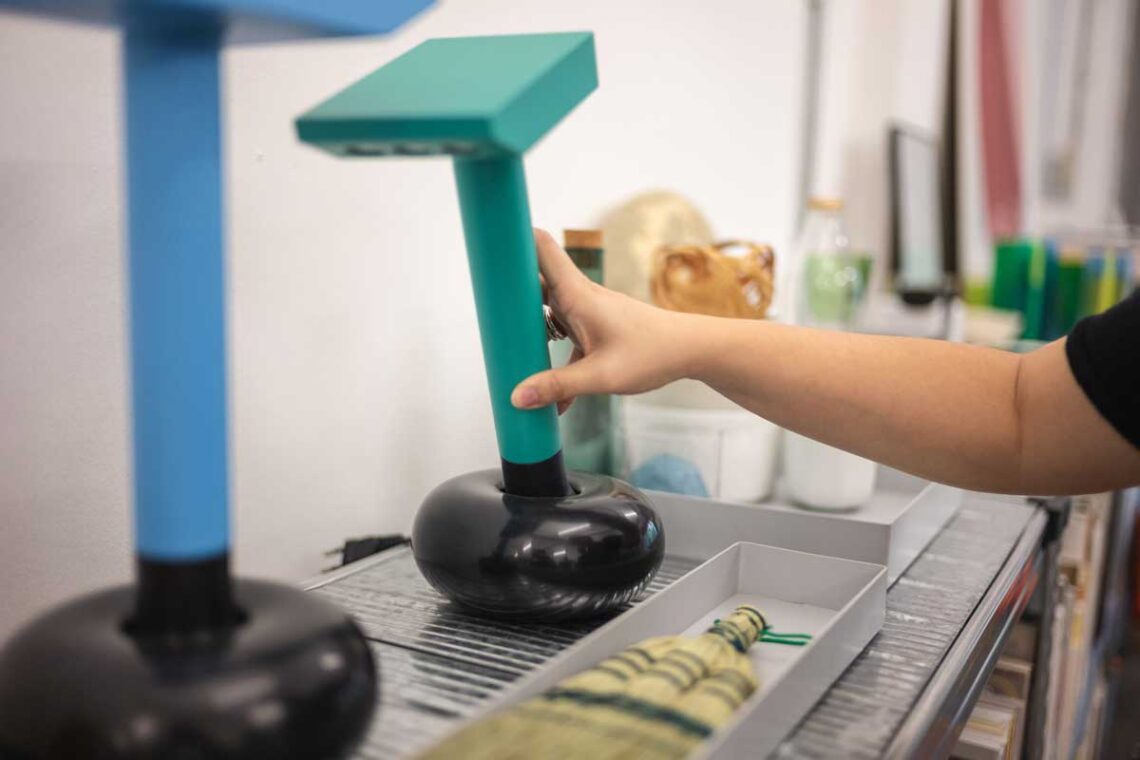
An intangible ‘something’
“Our work is always about the kind of experience and emotional quality that design brings,” says Wong of the diverse portfolio that he and Lui (his partner in work and life) have produced together since they founded Studio Juju in 2009. Industrial designers by training, Lui and Wong have created furniture, lighting, objects, and installations that have a way of making you pause and contemplate.
In parallel, they have produced a number of interior design projects with the same emotional resonance – that intangible ‘something’. They established a second studio, O Design Office, this year to bring focus to this eclectic spatial branch of their practice, which encompasses residential, workplace, retail, and exhibition environments.
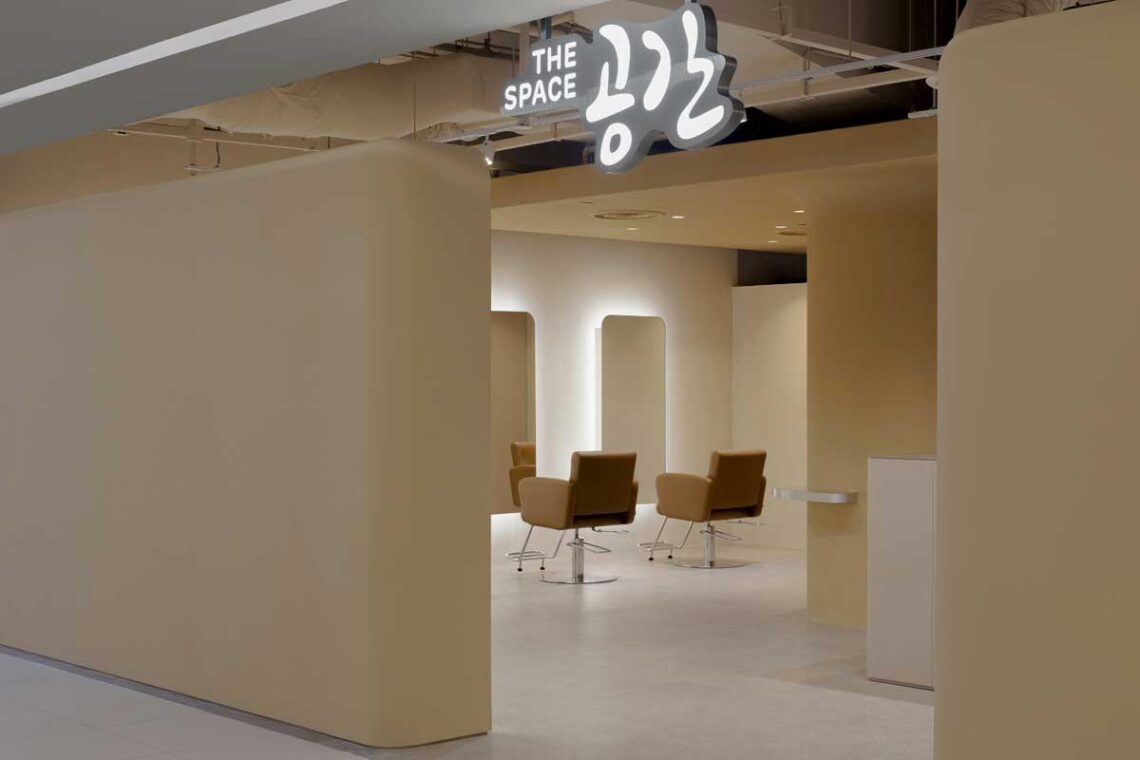
No matter the scale or context, there is something recognisably ‘Juju’ about their work. It is an absolute succinctness of form fused with a playful sculptural quality and a concise application of colour – a blend that commands attention while it also invites curiosity and tickles the imagination.

Our designs can become quite distilled, but they’re not quiet.
– Priscilla Lui
That special ‘something’ was recognised early in their careers when Studio Juju was selected as one of three recipients of the W Hotels Designers of the Future Award in 2011 by DesignMiami Basel, giving them the opportunity to present a newly commissioned work at the DesignMiami Basel show in Switzerland that year. They created A Tent – a minimal sculptural frame that delineates a space in which people can gather without being segregated from their surroundings. It was an early indication of their inclination to think at the scale of both objects and spaces.
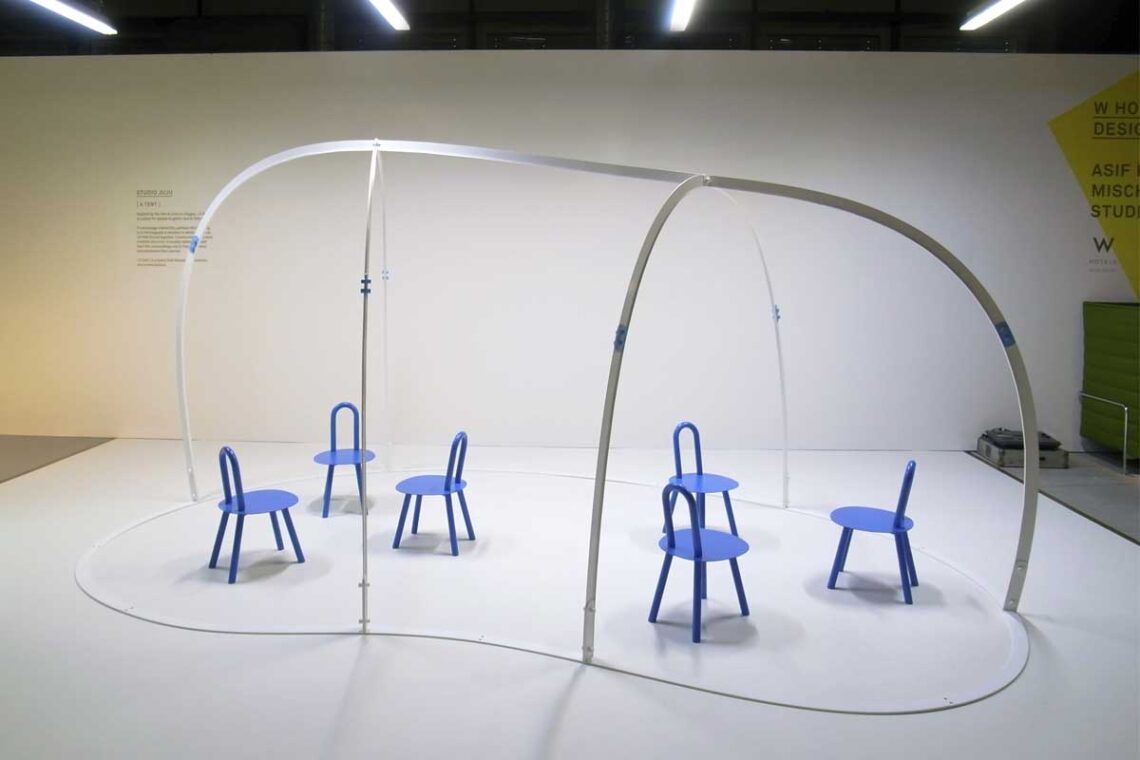
Guided by intuition
Studio Juju exhibited at SaloneSatellite in 2009, 2010, and 2011 with the support of the DesignSingapore Council’s (Dsg’s) Overseas Promotion Partnership Programme grant initiative. “The grants were a very big push for us, because the costs for making and exhibiting your work in Milan are quite high,” says Wong. He continues, “At that point in time, social media was not so diverse or open, so showing physical work really mattered. The financial support helped us be less burdened so we could think more about the content we were going to show.”
The opportunity to focus certainly paid off. In the 2009 edition of the SaloneSatellite show (an exhibition for designers under the age of 35) at the Salone del Mobile (Furniture Fair), Lui and Wong showcased an unusual cluster of fluidly shaped steel tables of various heights and sizes – the Rabbit and the Tortoise Collection.
Named after the poetic animal-like outlines of the two largest tables, the collection was designed to encourage a changeable use of space and childlike spontaneity in the interactions between people. “We were trying to break away from the normal way of thinking about the proportions of a table,” explains Wong.
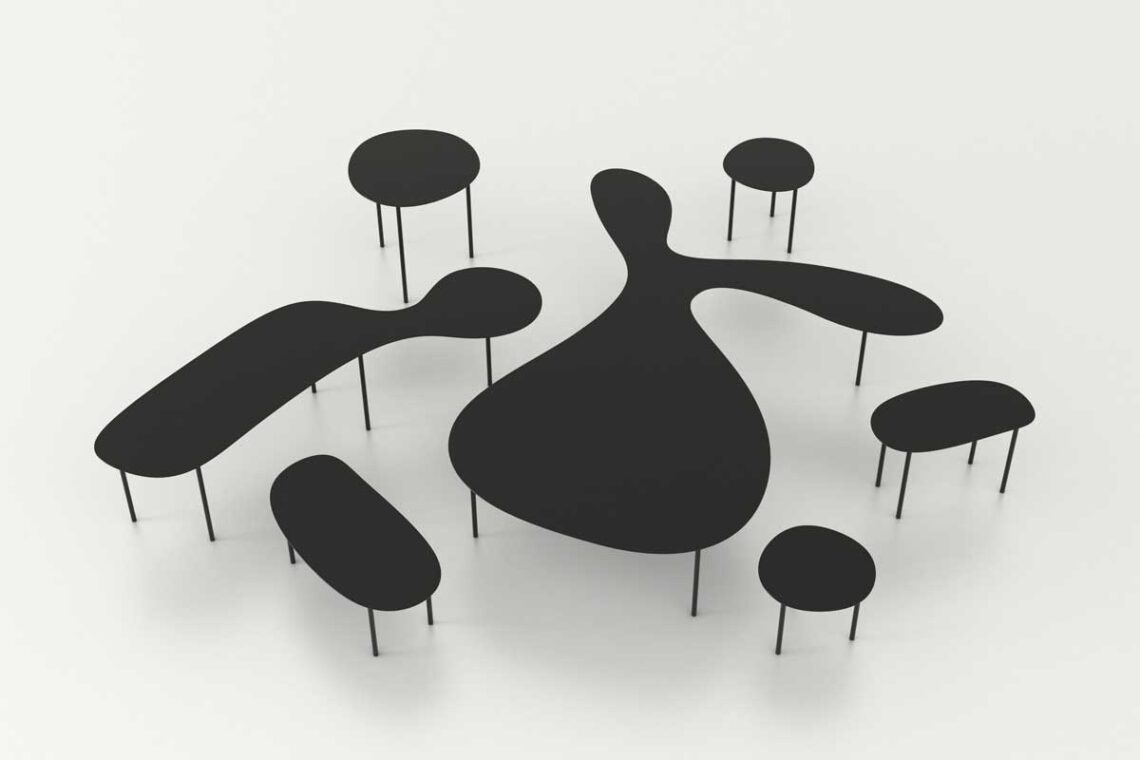
The collection was subsequently featured in Wallpaper magazine, where it was spotted by Italian furniture brand Living Divani. It went into production with Living Divani in 2012 and is still available today, with the brand describing it as a way to bring “elegance and joy” to the home environment – how very Juju!
In 2011, they received the Design Report Award, which honoured the best newcomer at SaloneSatellite. This earned them a place in SaloneSatellite’s 15th anniversary exhibition in 2012. “It was a milestone for us,” says Lui, recounting the thrill of exhibiting as a young studio alongside seasoned designers.
Back home in Singapore, the Rabbit and the Tortoise Collection received a President*s Design Award ‘Design of the Year’ accolade in 2014. Nominator Wendy Chua noted in her citation how furniture typologies that restrict themselves to prescribed uses of space no longer fit today’s more fluid modes of living. The Rabbit and the Tortoise Collection, on the other hand, allows for intuitive behaviour.

In preparing to exhibit in Milan, we went on a quest to understand ourselves, what we wanted to do, and how we could design and produce. We learned a lot through the process.
– Priscilla Lui
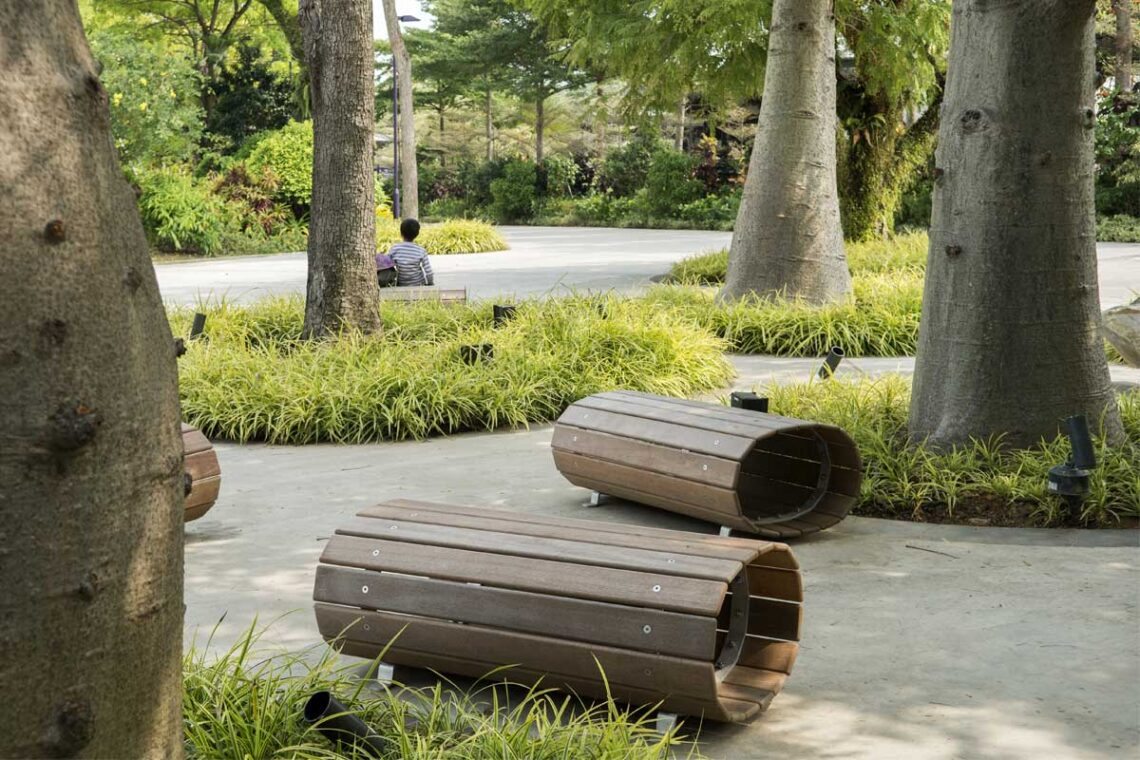
Designing cultural resonance
The traction gained by Studio Juju with international brands through the experience of exhibiting in Milan opened up many opportunities, including the production of the flat-packable TO Tables by Italian brand Desalto. But more recently, it is Lui and Wong who have been orchestrating opportunities – on home soil, what’s more.
During the height of the COVID lockdown, they made the carefully weighed decision to embark on a project with the potential to influence the industrial design playing field in Singapore in the long term. Despite the nation’s decades-long reduction in manufacturing capacity for industrial design products, Lui and Wong decided to create a brand for products that are designed and made in Singapore.
They began visiting makers, manufacturers, vendors, and suppliers to understand their capabilities, such that a series of products could be designed with local manufacturing in mind from the start. Bolstered by a Good Design Research (GDR) grant and support from Dsg in 2021, their endeavour developed into the brand New Optimistic Works.
“We are thinking of cultural resonance,” says Lui. She continues, “In a young nation where things move quickly, there’s a need to consciously preserve the heritage and skills of making and crafting consistently across time. If makers and craftspeople are robbed of the opportunity to practice consistently, their skills will be lost.”

A case in point is semi-retired sheet metal worker Jimmy Chin of Chop Wah Hin Sheet Metal Works. He keeps his trade alive by repairing damaged kopi pots from kopitiams, but Lui and Wong engaged him to make the Galvanised Lamp that they designed for New Optimistic Works.
It was exhibited at the National Design Centre (NDC) in 2022 at the conclusion of their GDR study, along with a suite of other products designed by Studio Juju and designers they invited to participate: Hans Tan, Kim Choy, Nathan Yong, Wendy Chua and Gustavo Maggio, and Tiffany Loy. Together, the various objects and trials were presented as Case Study: Design & Made in Singapore.

Despite optimism among designers about having their work produced locally, Studio Juju discovered in the process of the project that local makers – even if aligned with this direction in theory – face a range of challenges. These include their capacity to commit to production outside of streamlined workflows for larger items such as building components, the existing demands of their day-to-day operations, high running costs, and labour shortages.

“The project revealed that a lot of makers are open to the idea of being product craftspeople, it’s just that many other factors prevent it,” explains Wong. Adds Lui, “Even so, I think there are makers and abilities in Singapore that we can continue to harvest.”
Studio Juju has done so with the development of two new lamps (exhibited during Singapore Design Week (SDW) 2023 at EMERGE @ FIND) and the completion of the first batch of the original Galvanised Lamp with maker Chin. Lui and Wong plan to begin selling it in the coming months.
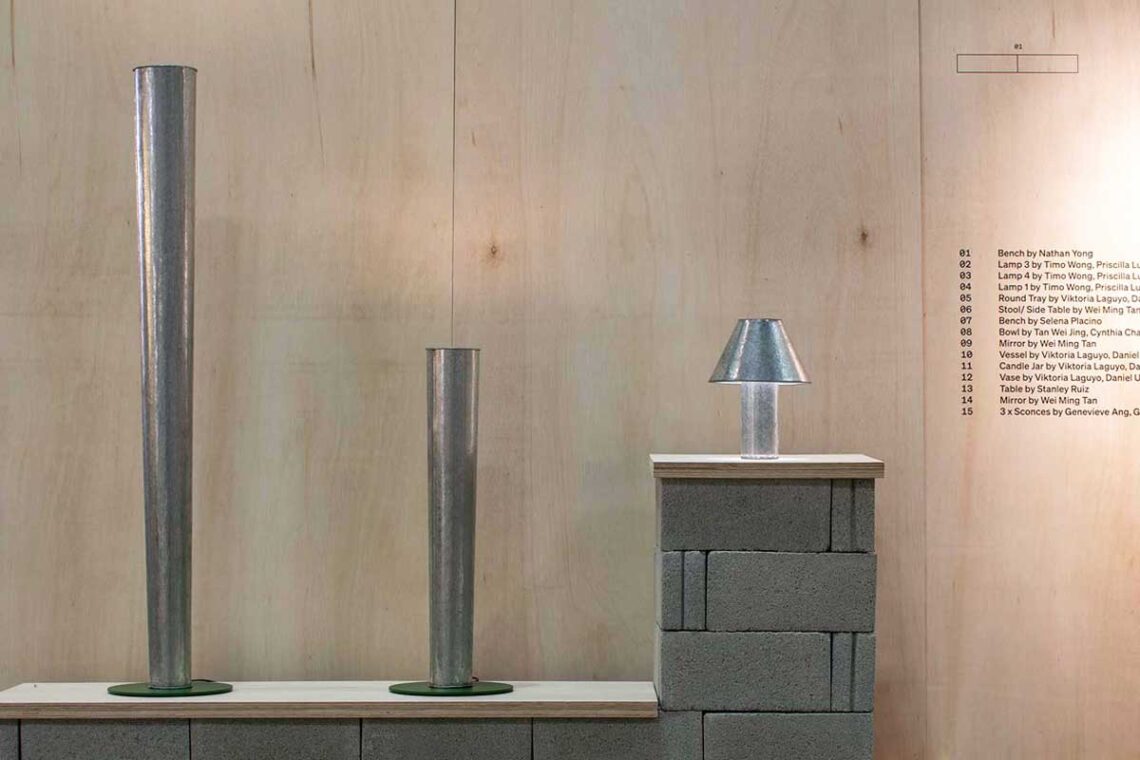
Before then, you can catch Studio Juju’s work at NDC as part of the Future Impact: Homecoming Showcase curated by Tony Chambers and Maria Cristina Didero. Fresh from a showing in Milan earlier this year, the exhibition includes Studio Juju’s aptly named Coffee Coffee Tables.
These simple and stoic square forms celebrate the sheet format of the Danish material with which they are made – a composite of coffee bean shells extracted during the roasting process and recycled industrial plastic waste. Designed for flat-packed shipping and created with no wastage from the sheet, they are a physical and visual embodiment of resilience.
Their expression of conviction in the face of the sustainability challenge could not be truer to the Studio Juju spirit. Do you feel it?

Read our unfolding series of stories on creative discovery and making life in Singapore ‘Better by Design’.
